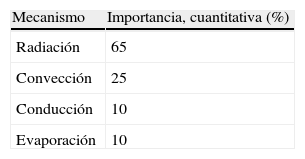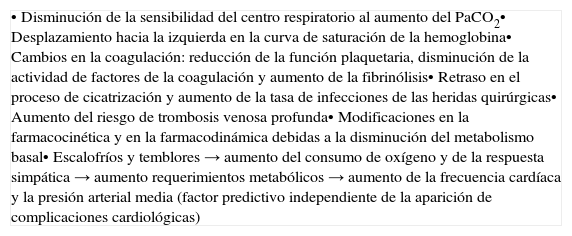La hipotermia (temperatura corporal central menor de 36°C) es el trastorno de la temperatura más frecuente en pacientes quirúrgicos. En general, debe ser evitada para reducir la morbimortalidad y los costes derivados. La temperatura debe ser considerada como una constante vital más y, todo el personal implicado en el cuidado del paciente quirúrgico debe estar concienciado con el sostenimiento de la misma dentro de la normalidad. El mantenimiento de la temperatura corporal es el resultado del balance entre la producción y la pérdida de calor. La regulación de la temperatura se lleva a cabo mediante un sistema de retroalimentación positiva y negativa en el sistema nervioso central, desarrollándose en 3 fases: aferencia térmica, regulación central y respuesta eferente. El mejor método para asegurar la normotermia es la prevención. Es obligado el calentamiento activo intraoperatorio del paciente. El sistema más eficaz, sencillo y barato para prevenir y tratar la hipotermia es el que emplea aire caliente.
Hypothermia (body temperature under 36°C) is the thermal disorder most frequently found in surgical patients, but should be avoided as a means of reducing morbidity and costs. Temperature should be considered as a vital sign and all staff involved in the care of surgical patients must be aware that it has to be maintained within normal limits. Maintaining body temperature is the result, as in any other system, of the balance between heat production and heat loss. Temperature regulation takes place through a system of positive and negative feedback in the central nervous system, being developed in three phases: thermal afferent, central regulation and efferent response. Prevention is the best way to ensure a normal temperature. The active warming of the patient during surgery is mandatory. Using warm air is the most effective, simple and cheap way to prevent and treat hypothermia.










